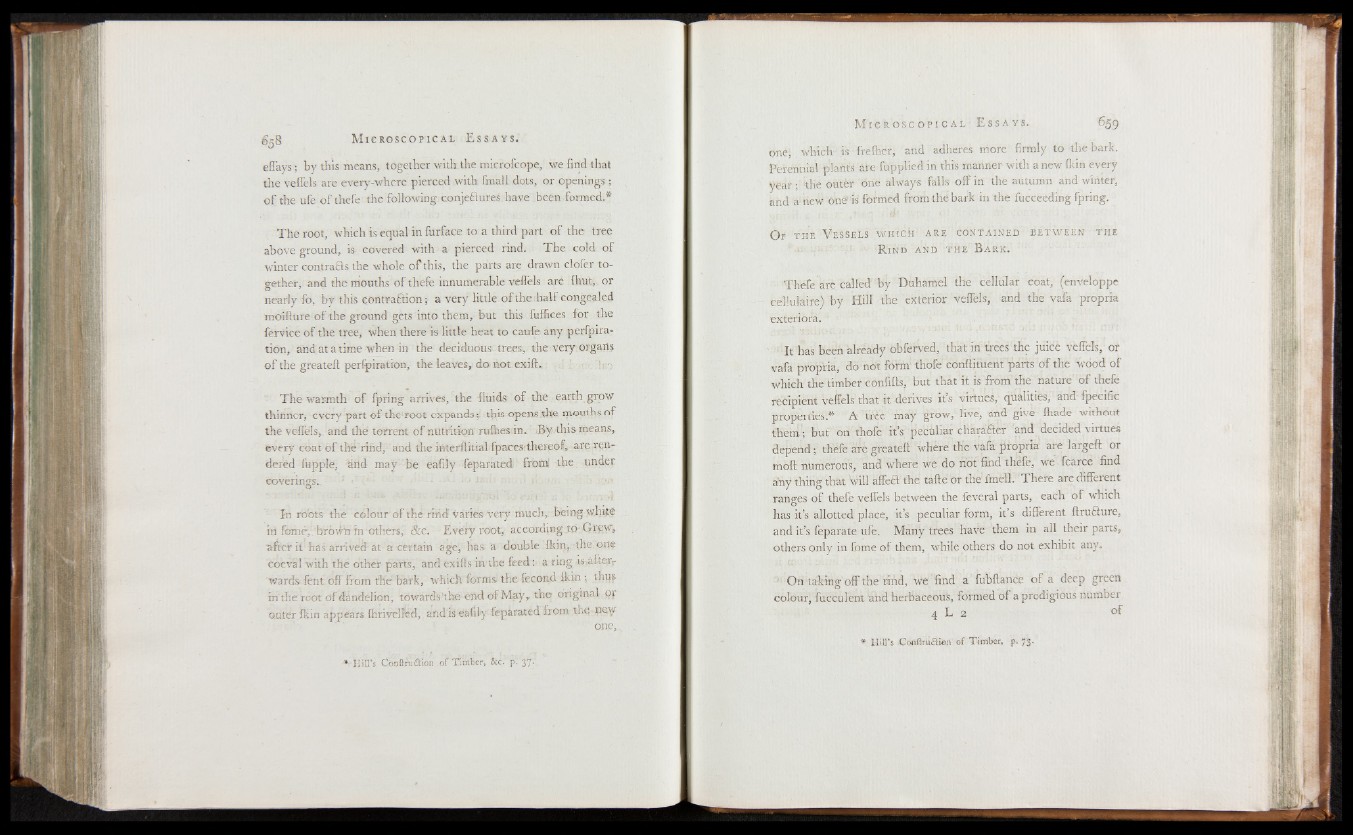
g - 8 M i c r o s c o p i c a l E s s a y s .
effays ; by tins means, together with the microfcope, we find that
the veffels are every-where pierced with fmall dots, or openings ;
o f the ufe ofthefe the following conjectures have been formed*
The root, which is equal in furface to a third part o f the tree
above ground, is covered with a pierced rind. The cold of
winter contra&s the whole o f this, the parts are drawn clofer together,
and the mouths ofthefe innumerable veffels are {hut,, or
nearly fo, by this contraction ; a very little o f the half congealed
moifture of the ground gets into them, but this fuffices for the
fervice of the tree, when there is little heat to caufe any perfpira-
tion, and at a time when in the deciduous1; trees, the very organs
o f the greateft perlpiration, the leaves, do not exift.
The warmth of fpring arrives, the fluids of the earth grow
thinner, every part of the root expands j this opens the mouths of
the veffels,. and the torrent of nutrition rufhesin. ,By this means,
every coat o f the rind, and the interflitial fpaces'thereof, arc. rendered
fupple, and may be eafily -feparated from! the under
coverings.. ■ • ■
In roots the colour o f the rind Varies very much, being white
in fomé, brown in others,. &c. Every root, according to- Grew,
after it has arrived- at a certain age, has a double {kin, the. one
coeval with thé other parts, and exifts in the feed : a ring is.atter,-
'wards fent. off from thé bark, which forms, the fécond ftin ; thus
in'the root of dandelion, towards 'the end of May , the original, gy
outer {kin appears fhrivelfed, andis eafily feparated from the pay
*• Hill’s Cbnflruaion of Timber, &c. p. 37,
one,
659
one; which is frefher, and adheres more firmly to the bark.
Perennial plants are fupplied in this manner with a new {kin every
year ; the outer one always falls off in the autumn and winter,
and anew one' is formed from the bark in the fucceeding fpring.
Or the V essels which are contained between the
R ind and 'the B a r k .
Thefe are called'by Duhamel the cellular coat, (enveloppe
cellulaire) by Hill the exterior veffels, and the vafa propria
exterior’a.
It has been already obferved, that in trees the juice veffels, of
vafa propria, do not form thofe conftituent parts ctf the wood of
which the timber eonfifts, but that it is from the nature'of thefe
recipient veffels that it derives it’s virtues, qualities, and fpecific
properties* 1 A tree may grow, live, and give {hade without
them.; but on thofe it’s peculiar character and decided virtues
depend; thefe are greateft where the vafa propria are largeft or
moft numerous, and where we do not find thefe, we fcarce find
any thing that will affe£l the tafte or the' fmell. There are differen t
ranges of thefe veffels between the feveral parts, each of which
has it’s allotted place, it’s peculiar form, it’s different ftrufture,
and it’s feparate ufe. Many trees have them in all their parts,
others only in feme of them, while others do not exhibit any.
- On taking off the rind, we find a fubftance o f a deep green
colour, fucculent and herbaceous, formed of a prodigious number
4 L 2 ° f